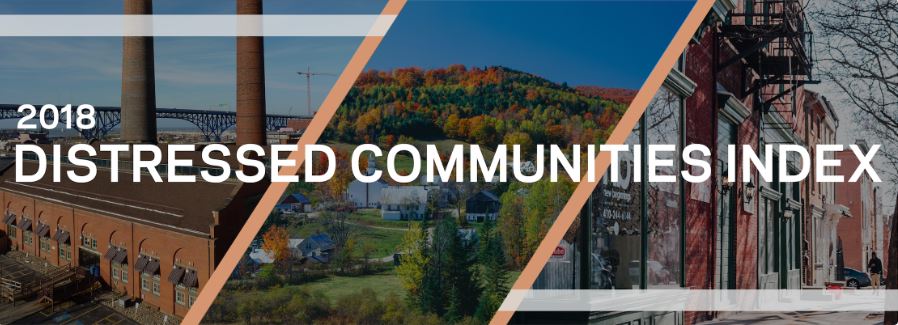In October of 2018, the Economic Innovation Group, a bipartisan think tank based here in Washington, DC, released their Distressed Communities Index. It reports on the economic health of U.S. communities according to ZIP codes, municipalities and congressional districts.
The report examines two time frames: 2007-2011 (starting with the beginning of the Bush administration’s Great Recession) and 2012-2016 (starting with the Obama administration’s gradual economic recovery).
In short, it finds that both devitalization and revitalization are manifesting in a far more fragmented fashion than ever before, nationally, regionally, and even within communities.
In other words, our economy is increasingly reflecting our society. Or maybe our society is increasingly reflecting our economy…
From the Introduction of the report:
A decade ago, the financial crisis impacted our economy, our politics, and our society in ways few could have expected. Looking back now, we wondered: How did the Great Recession and subsequent recovery affect the health and trajectories of American communities? And how have the rewards of a long national expansion been distributed in local terms across different places and populations?
To find out, EIG used its Distressed Communities Index (DCI) to compare two distinct time periods: 2007-2011 and 2012-2016. The DCI combines seven complementary metrics into a single measure of economic well-being, resulting in a clear snapshot of the economic and social state of the U.S. zip codes, counties, cities, and congressional districts. Places are sorted into quintiles based on their performance on the index: Prosperous, comfortable, mid-tier, at risk, and distressed.
What we found amounts to a “Great Reshuffling” – a sorting of human capital, job creation, and business formation that has had vast implications for Americans and their communities. In the years following the recession, top-tier places have thrived, seeing meteoric growth in jobs, businesses, and population. Meanwhile, the number of people living in America’s most distressed zip codes is shrinking as the nature of distress becomes more rural. But the gaps in well-being between prosperous areas and the rest have grown wider, and national rates of growth have become more distant from the experience of the median community.
What was once a country of disparate places that converged towards prosperity is now a country of places drifting further apart.

